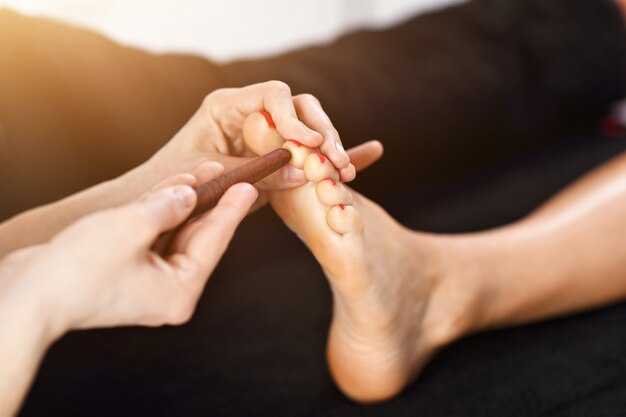Understanding Gout: How Long Does a Flare-Up Last?
Imagine waking up in the middle of the night with an intense, burning sensation in your big toe. The pain is relentless, throbbing, and it might feel like the affected joint is on fire. You’re experiencing a gout flare-up, an event both unexpected and excruciating. But just how long does a gout flare-up last? This question is crucial for anyone suffering from this painful condition, as it can significantly impact your daily life and activities.
What is Gout?
Gout is a form of arthritis characterized by sudden, severe attacks of pain, redness, and swelling in the joints. It occurs when there is an accumulation of uric acid crystals, a byproduct of the breakdown of purines found in many foods. When the body cannot efficiently remove uric acid, it builds up and forms sharp crystals in the joints, leading to inflammation and a gout attack.
Common Symptoms of a Gout Flare-Up
- Intense joint pain: Often at its worst in the first 12 to 24 hours.
- Swelling and tenderness in the affected joint.
- Redness and a warm sensation over the joint.
- Limited range of motion as the flare-up progresses.
Understanding the symptoms can help you identify a gout attack early, potentially aiding in quicker management and relief.
Duration of a Gout Flare-Up
A common question is how long these uncomfortable flare-ups might last. Typically, a gout flare-up can last anywhere from a few days to a week or more. In some instances, especially without treatment, the pain can linger for more extended periods.
Factors Influencing the Length of a Flare-Up
Several factors can influence how long a gout flare lasts:
- Severity of the Attack: More severe attacks may last longer.
- Treatment Timeframe: Prompt treatment can shorten the duration.
- Lifestyle and Diet: Consumption of high-purine foods may prolong flares.
- Overall Health: Healthier individuals may recover more quickly.
- Medication Adherence: Consistently following prescribed treatment can influence the length and severity of gout attacks.
Managing and Reducing the Duration of Flare-Ups
While understanding the duration of a gout flare-up is important, knowing how to manage and potentially reduce its length is equally crucial.
Immediate Steps During a Gout Flare-Up
- Rest the affected joint: Refrain from strenuous activities and keep the joint elevated.
- Ice application: Applying ice to the inflamed area can help reduce swelling and pain.
- Hydration: Drinking plenty of water can help flush out uric acid from the body.
- Consider OTC Pain Relief: Non-prescription pain relievers can help reduce pain and inflammation. Always consult a healthcare provider for recommendations.
Long-Term Lifestyle Adjustments
Making lifestyle adjustments can have a significant impact on managing gout and preventing future flare-ups:
- Adopt a Low-Purine Diet: Limit intake of foods high in purines like red meat, organ meats, and certain fish.
- Maintain a Healthy Weight: Excess weight can increase uric acid levels, so weight management is beneficial.
- Limit Alcohol and Sugar: Reducing or eliminating alcohol and sugary beverages can decrease uric acid.
- Regular Exercise: Gentle, regular exercise helps maintain joint health and overall wellness.
Addressing Myths and Misconceptions
There are several misconceptions surrounding gout that can lead to misunderstandings about treatment and management:
Myth 1: Gout Only Affects the Big Toe
While the big toe is a common site for gout pain, the condition can affect other joints, including the ankles, knees, elbows, wrists, and fingers.
Myth 2: Gout is Self-Inflicted by Poor Lifestyle Choices
While diet and lifestyle play a role, genetics, age, and other health conditions can significantly influence the risk of developing gout.
Myth 3: Gout is Just a Minor Annoyance
Gout can lead to serious complications if untreated, including chronic arthritis and joint damage.
Strategies for Prevention
To prevent future gout flare-ups, it’s essential to adopt comprehensive strategies:
- Regular Monitoring: Keep track of uric acid levels and consult with a healthcare provider.
- Consistent Medication Use: If prescribed, adherence to preventative medication can help.
- Diet Modification: Focus on a balanced diet low in purines and rich in vitamins.
- Stay Educated: Understanding triggers and early signs of gout can empower management efforts.
By employing these strategies, individuals can actively participate in reducing the frequency and severity of gout attacks.
When to Seek Help
Although many gout attacks can be managed at home, certain situations warrant professional medical intervention:
- Pain persists beyond a week.
- Fever accompanies the joint pain.
- Multiple joints are affected simultaneously.
- You experience frequent flare-ups despite preventive measures.
Consulting with a healthcare provider can provide tailored advice and adjustments in treatment to better control gout.
Gout flare-ups can be distressing, but with understanding and proactive management, individuals can effectively reduce the disruption they cause. Always consider reaching out to a healthcare provider to discuss any persistent concerns or symptoms related to gout.
📝 Quick Summary:
- Typical Flare Duration: 3-10 days, but can vary.
- Key Factors Influencing Duration: Severity, treatment, lifestyle.
- Immediate Relief Tips:
- Rest and elevate affected joint.
- Apply ice to reduce swelling.
- Stay hydrated.
- Preventative Steps:
- Adopt a low-purine diet.
- Maintain a healthy weight.
- Limit alcohol and sugars.
- Exercise regularly.
- When to Seek Help: Persistent pain beyond a week, fever, or frequent flare-ups.
